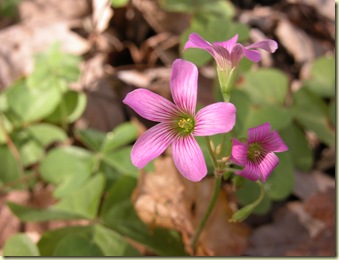Follow the epic tale of restoration and conservation of an urban forest on the campus of the Museum of Science & Industry in Tampa.
Wednesday, November 7, 2012
Moving to a New Home
All posts from The Longleaf have been migrated to MOSI Outside, and in a month or so this blog will be deleted. We hope you'll continue to follow us at MOSI Outside by changing your bookmarks and RSS feed subscriptions accordingly. Join us on Facebook, too, for daily updates and news and information of interest, and to share your own questions and thoughts.
We look forward to continuing to provide you with valuable information about MOSI's living exhibits. Thanks for reading!
Monday, April 9, 2012
Leaping lizards!
The botanical name of this plant derives from the Greek words sauros (lizard) and oura (tail) which relate to the long and narrow flower cluster and from the Latin cernuus for falling headlong which refers to the drooping shape of the blooms
These flowers have a lovely fragrance and my nose led me to this blooming patch by our boardwalk. You will be able to find Lizard's Tail blooming through most of the Spring.
Wednesday, February 1, 2012
Violet Wood Sorrel
Another of the early wildflowers of the year, Violet Wood Sorrel (Oxalis violacea) is starting to flower in the woods.
Often mistaken for clover or even shamrocks, oxalis species are a common herb sometimes considered a weed in gardens. This particular wood sorrel is common east of the Rocky Mountains but is becoming increasingly rare and threatened in it’s northeastern range. Violet Wood Sorrel is listed as endangered in Massachusetts and Rhode Island.
Last week, I passed a patch of Violet Wood Sorrel and was surprised to watch a Zebra Longwing butterfly nectaring on the flowers. I never really thought of this species as much of a nectar plant, but when flowers are scarce this probably looks quite inviting.
 Oxalis is also edible to humans. Check out last week’s post on Creeping Wood Sorrel for more information about this wild edible plant.
Oxalis is also edible to humans. Check out last week’s post on Creeping Wood Sorrel for more information about this wild edible plant.
Learn more about this species
Thursday, January 26, 2012
Creeping Wood Sorrel

Green is starting to appear in the undergrowth of the BackWoods Forest Preserve as perennial plants clamber out from under the leaf litter. One favorite of this season is Creeping Wood Sorrel (Oxalis corniculata).
Rich in vitamin C, the leaves and flowers of this plant are edible and have a slight tang of lemons. The genus name Oxalis comes from the Greek oxus, which means "sour" in reference to the tangy flavor of the plant. This wood sorrel and many other related plants contain Oxalic Acid so a "steady diet of raw leaves," is not recommended. [1] If you have this tasty edible growing in your yard and want to experiment with eating it, lots of recipes are available online. A quick search for wood sorrel recipes found
- Wood Sorrel Summer Soup
- Bay Scallops in Wood Sorrel Butter Sauce

- Wood Sorrel and Sweet Onion Tart Recipe
As always, when considering eating of wild edibles, take care to make sure that the plant that you have is indeed edible. Many online and book references exist to help you identify your plants.
For more on this species
[1] Rombauer, Rombauer Becker, and Becker (1931/1997). Joy of Cooking, p.415. ISBN 0-684-81870-1.



